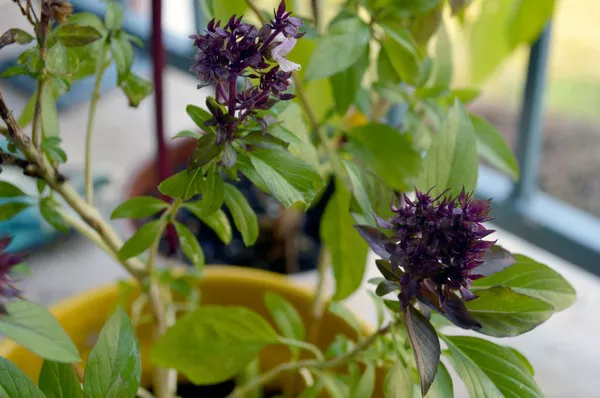As the pursuit of chemical-free and eco-friendly solutions gains momentum, the use of fresh mint as a key ingredient in bug repellents has become increasingly popular. Harnessing the natural aromatic properties of mint, individuals can create effective and pleasant-smelling bug repellents at home. In this article, we will explore the step-by-step process of making bug repellent with fresh mint, highlighting its efficacy in keeping pests at bay.
Understanding Mint’s Pest-Repelling Properties
Mint, with its invigorating scent, contains essential oils such as menthol and pulegone, which are believed to have natural pest-repelling properties. These aromatic compounds can act as a deterrent, creating an environment that pests find inhospitable. By incorporating fresh mint into bug repellent formulations, individuals can tap into nature’s own defense mechanism against pesky insects.
Selecting the Right Mint Variety
Before embarking on the bug repellent-making journey, it is essential to choose the right mint variety. While several types of mint exist, not all are suitable for bug repellent formulations. Spearmint and peppermint are among the most commonly used varieties due to their potent essential oil content and pleasant aroma. These varieties are known for their effectiveness in warding off a variety of pests, including mosquitoes, flies, and ants.
Harvesting Fresh Mint Leaves
To make bug repellent with fresh mint, the first step is harvesting the leaves at their peak. Ideally, this is done when the plant is in full bloom, as the essential oil content is highest during this period. Gently pluck the leaves from the plant, being careful not to damage them. Aim to collect a sufficient quantity to yield a potent bug repellent.
See Also: How to get rid of white pests on plant?
Preparing the Mint-Infused Oil
The key to a successful bug repellent lies in extracting the essential oils from fresh mint leaves. This can be achieved through the infusion process. Start by thoroughly washing and drying the mint leaves to remove any impurities. Once dry, finely chop or bruise the leaves to release the essential oils. Place the prepared leaves in a clean, dry jar and cover them with a carrier oil such as olive oil or jojoba oil. Ensure that the leaves are fully submerged in the oil. Seal the jar tightly and let it sit in a cool, dark place for at least two weeks, allowing the oil to absorb the aromatic compounds from the mint.
Creating a Mint-Infused Base
After the infusion period, strain the mint-infused oil to separate the leaves from the liquid. The resulting mint-infused oil forms the base of the bug repellent. This oil serves as the carrier for the essential oils extracted from the mint, enhancing the overall effectiveness of the repellent.
Adding Essential Oils for Enhanced Efficacy
To further boost the bug-repelling properties of the mint-infused oil, consider incorporating additional essential oils known for their pest-deterring qualities. Oils such as citronella, eucalyptus, lavender, and tea tree are popular choices. Each of these oils contributes its unique aroma and repellent properties, creating a synergistic blend that enhances the overall efficacy of the bug repellent.
Formulating the Bug Repellent Recipe
Once the mint-infused oil and additional essential oils are ready, it’s time to formulate the bug repellent recipe. The exact proportions may vary based on personal preference and the desired potency of the repellent. A simple recipe could involve combining one cup of mint-infused oil with 10-15 drops of each chosen essential oil. Experiment with different ratios to find the blend that suits your preferences.
Customizing for Specific Pest Concerns
Tailoring bug repellents to address specific pest concerns is a valuable aspect of the DIY process. Different pests may be deterred by specific scents, so adjusting the essential oil composition allows for a more targeted approach. For example, a higher concentration of citronella may be effective against mosquitoes, while peppermint and tea tree oils can discourage ants and flies.
Choosing a Suitable Carrier for Application
The carrier used to apply the bug repellent plays a crucial role in its overall effectiveness. Common carriers include water, witch hazel, or aloe vera gel. The chosen carrier helps disperse the essential oils evenly and facilitates easy application to the skin. Ensure the selected carrier is gentle and compatible with your skin type.
Blending and Testing the Bug Repellent
With all components ready, it’s time to blend the mint-infused oil, essential oils, and chosen carrier. Experiment with different ratios until you achieve a well-balanced and effective bug repellent blend. Before full-scale use, perform a patch test on a small area of skin to ensure there are no adverse reactions. Adjust the formulation if necessary to accommodate individual sensitivities.
Application and Storage Tips
Applying the bug repellent correctly ensures optimal protection against pests. Use a spray bottle for easy application, ensuring that the repellent is evenly distributed on exposed skin and clothing. Reapply as needed, especially in areas with high pest activity. When not in use, store the bug repellent in a cool, dark place to maintain its potency. Regular shaking before use helps redistribute the essential oils, enhancing the repellent’s effectiveness.
Eco-Friendly and Cost-Effective Pest Protection
Creating bug repellent with fresh mint offers a cost-effective and environmentally friendly alternative to commercially available products. By harnessing the natural properties of mint and essential oils, individuals can craft a personalized solution tailored to their preferences and pest concerns. This DIY approach not only minimizes exposure to synthetic chemicals but also promotes a more sustainable and holistic approach to pest management.
Conclusion
In conclusion, making bug repellent with fresh mint is a rewarding and straightforward process that leverages the natural pest-repelling properties of this aromatic herb. From selecting the right mint variety to formulating a customized blend, the DIY bug repellent journey allows individuals to take control of their pest protection in an eco-friendly and cost-effective manner. By embracing the power of nature, this homemade bug repellent provides a pleasant-smelling and effective solution for keeping pests at bay, ensuring a more enjoyable and pest-free outdoor experience.


